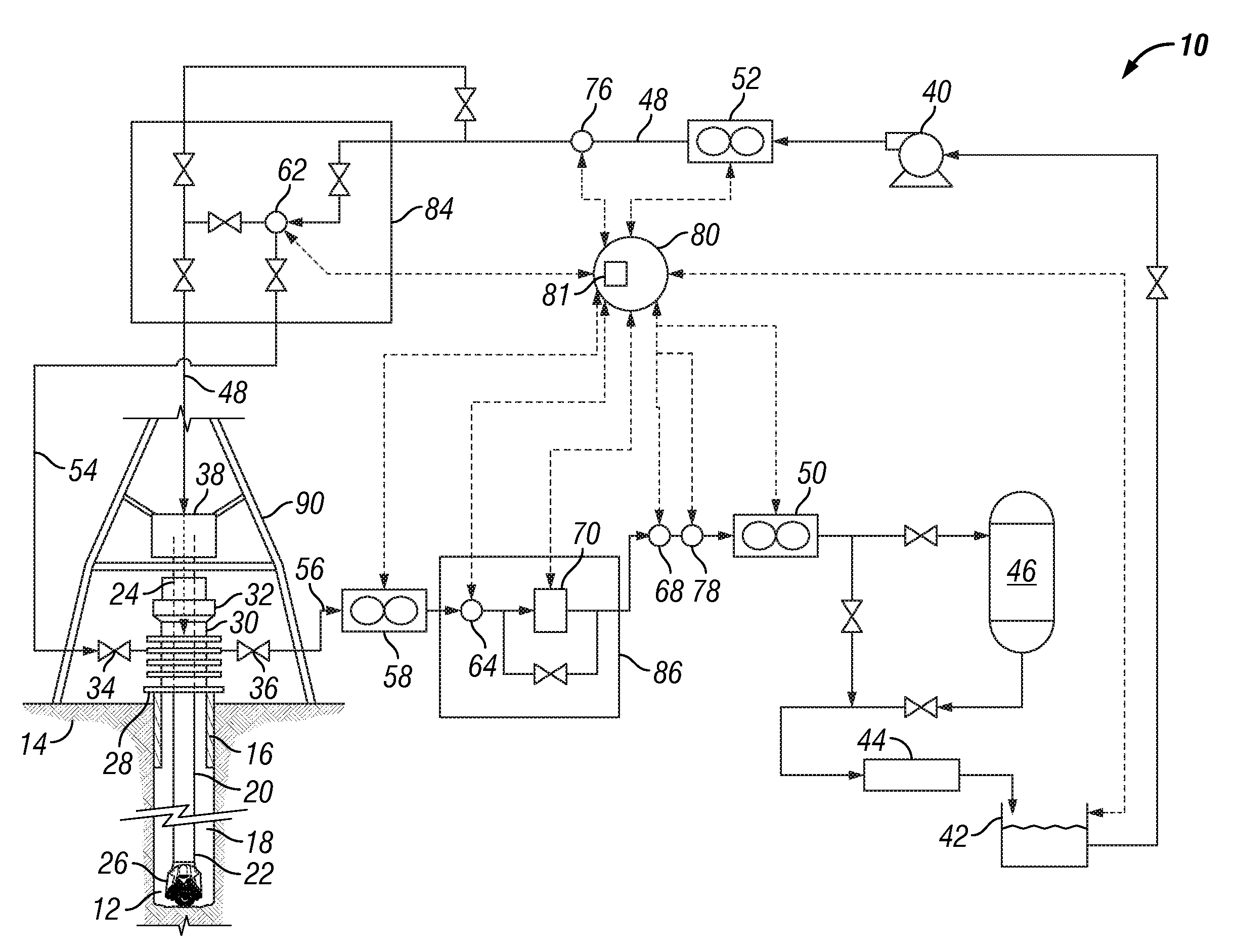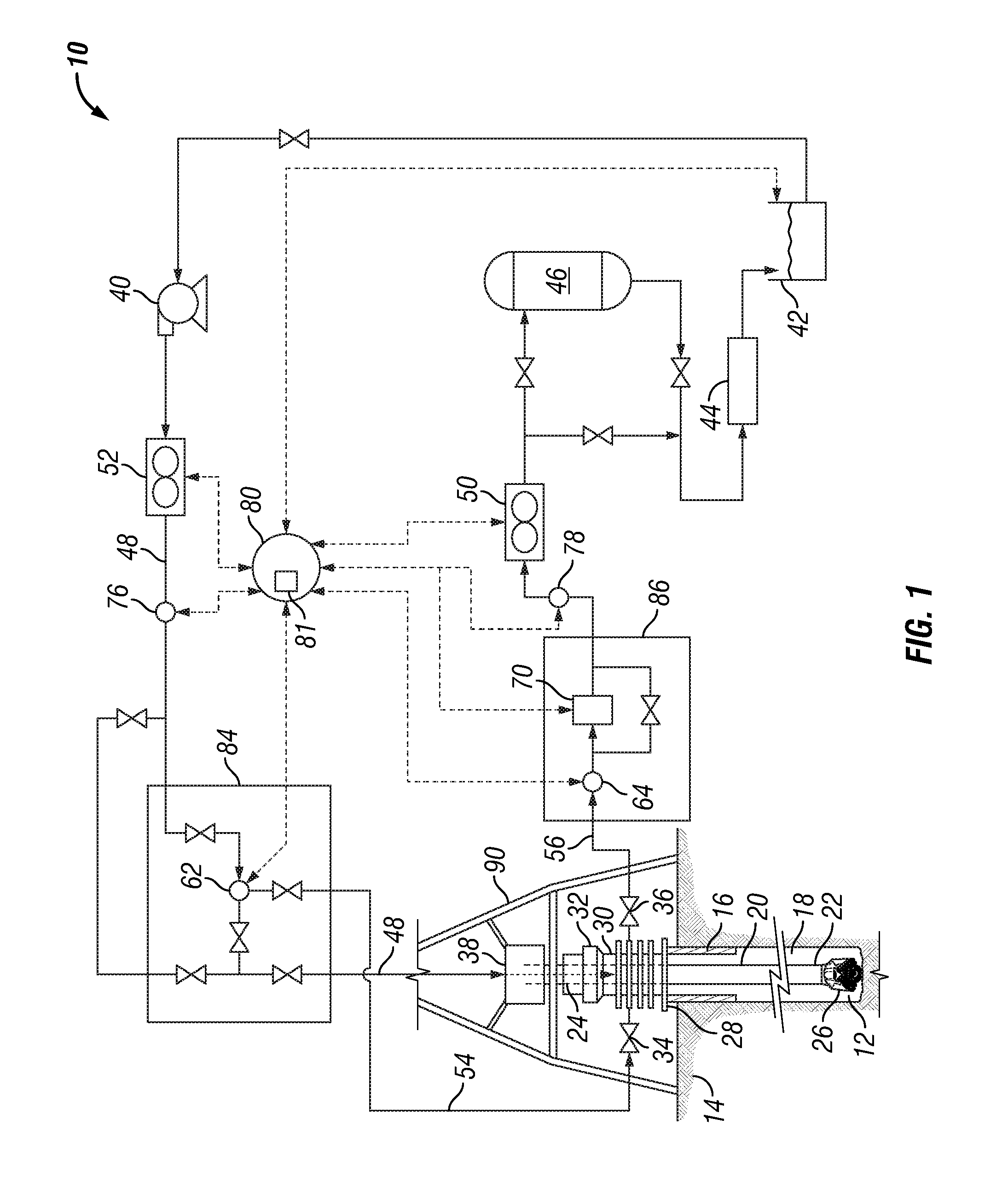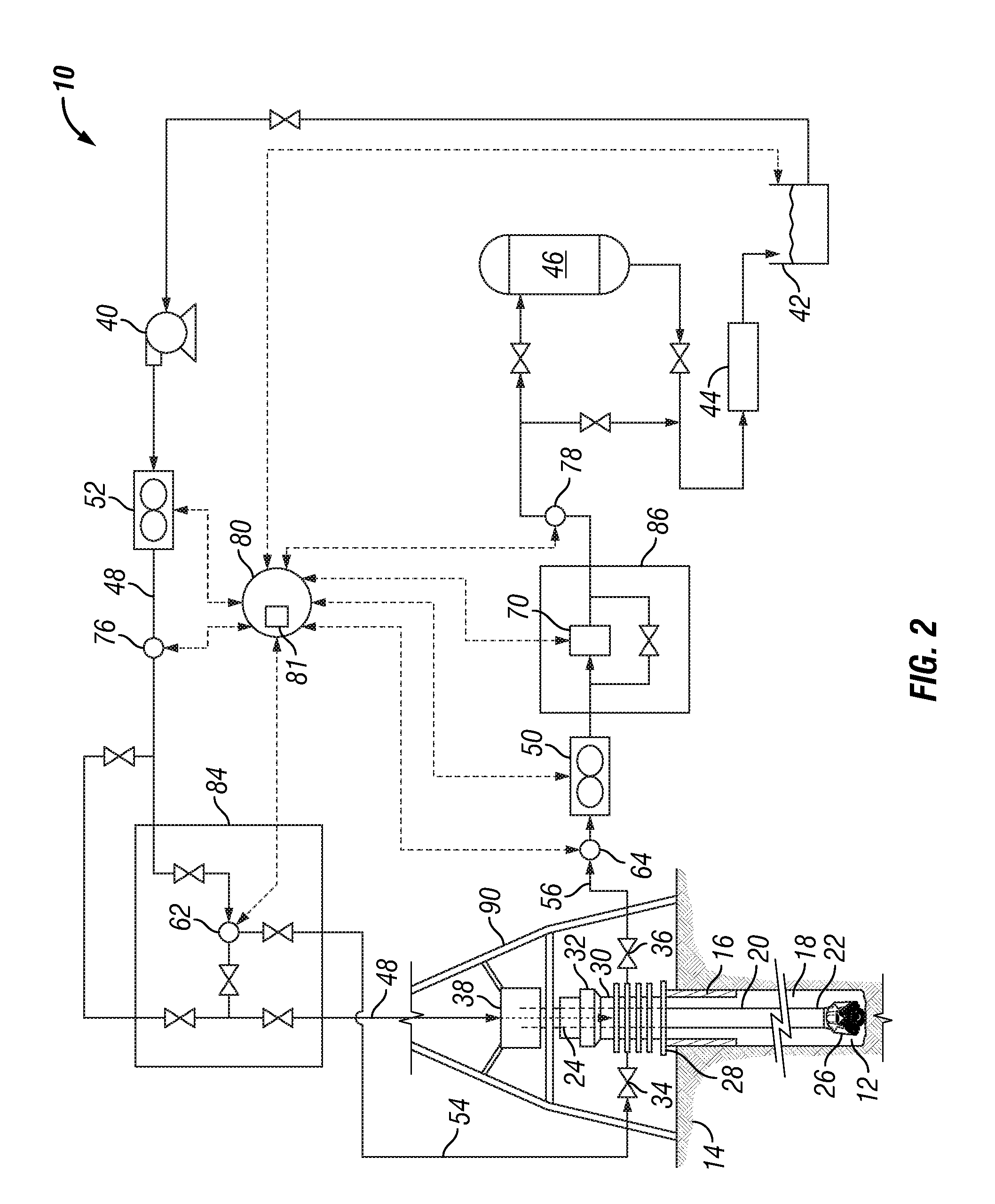System and method for safe well control operations
a well control and safety technology, applied in the direction of drilling pipes, wellbore/well accessories, sealing/packing, etc., can solve the problems of operator subsequently losing control of the well, difficulty in ensuring the successful completion of well control procedures, and loss of control of the well bore, so as to facilitate the operation of well control and facilitate hands-on training , the effect of improving accuracy
- Summary
- Abstract
- Description
- Claims
- Application Information
AI Technical Summary
Benefits of technology
Problems solved by technology
Method used
Image
Examples
example
[0072]The annulus pressure at a well bore depth of 10,000 feet in the well bore annulus between a 3 inch ID pipe and 5 inch ID pipe is to be determined. A Newtonian fluid having a density of 9.0 pounds per gallon is being circulated through the well bore at a flow rate of 100 gallons per minute. The backpressure being applied to the well bore annulus is 200 psi, as measured by the outlet pressure measurement device. The Θ300 rheological parameter of the fluid is 30 (i.e., μ=30 cp; the viscosity in centipoise). As previously discussed, the annulus pressure is determined by adding the hydrostatic pressure of the fluid / mud within the well bore annulus, the friction loss / pressure generated in the well bore annulus, and choke line if applicable, by any fluid in circulation, and the outlet pressure (i.e., backpressure applied to the well bore). The hydrostatic component of the annulus pressure is determined as the product of the equation, 0.052*(depth)*(density), which based on the above ...
PUM
 Login to View More
Login to View More Abstract
Description
Claims
Application Information
 Login to View More
Login to View More - R&D
- Intellectual Property
- Life Sciences
- Materials
- Tech Scout
- Unparalleled Data Quality
- Higher Quality Content
- 60% Fewer Hallucinations
Browse by: Latest US Patents, China's latest patents, Technical Efficacy Thesaurus, Application Domain, Technology Topic, Popular Technical Reports.
© 2025 PatSnap. All rights reserved.Legal|Privacy policy|Modern Slavery Act Transparency Statement|Sitemap|About US| Contact US: help@patsnap.com



